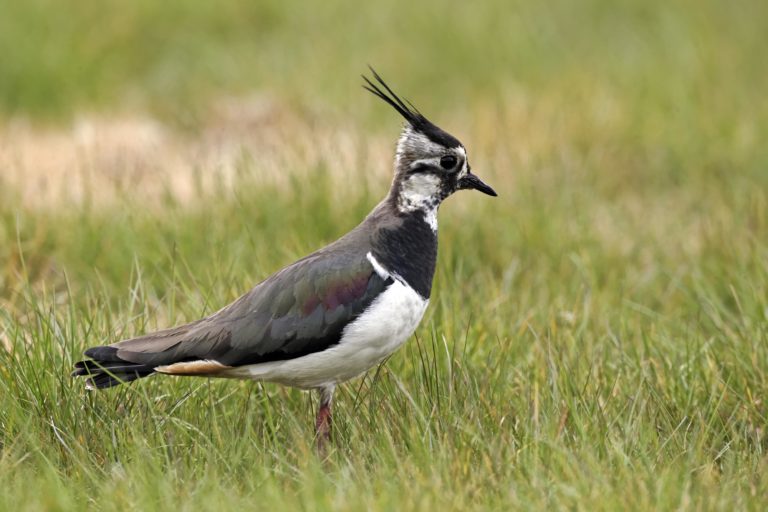Vanellus vanellus

Vanellus vanellus, the Northern Lapwing or Peewit, is a migratory bird belonging to the plover family and can reach a body size of up to 32 cm. Its upper body is dark with a greenish sheen, while the underparts are white. It has a short, pointed beak and a crest on its head. The Northern Lapwing is a ground-nesting bird (Schaefer 2018), with the breeding season typically starting between April and May. The clutch usually consists of four eggs. It prefers habitats such as farmland, marshes, and the Wadden Sea (Peterson et al. 1993). The main threats to the Northern Lapwing include peatland afforestation, disturbances to breeding areas from recreational use, agricultural activities, and industrial peat extraction. The intensification of agriculture has led to a significant decline in the population of this plover species (Schmidt 2018).
Diet: Northern Lapwings primarily feed on invertebrates, which they pick from the sand or mud (Schaefer 2018). However, they also consume plant materials such as seeds and fruits.
Threat Status: Globally, the Northern Lapwing is classified as “near threatened” in the IUCN Red List of Threatened Species, while in Germany, it is listed as “critically endangered” on the Red List. According to the Federal Species Conservation Regulation (BArtSchV), the Northern Lapwing is “strictly protected.”
-
Peterson, R et al. (1993)A Field Guide to the Birds of Britain and Europe: Houghton Mifflin Harcourt.
-
Schaefer, M (2018)Brohmer – Fauna von Deutschland. Ein Bestimmungsbuch unserer heimischen Tierwelt: Quelle & Meyer Verlag GmbH & Co.
-
Schmidt, J (2018)Kiebitzinseln in der Agrarlandschaft. Wiesbaden: Springer Fachmedien Wiesbaden.